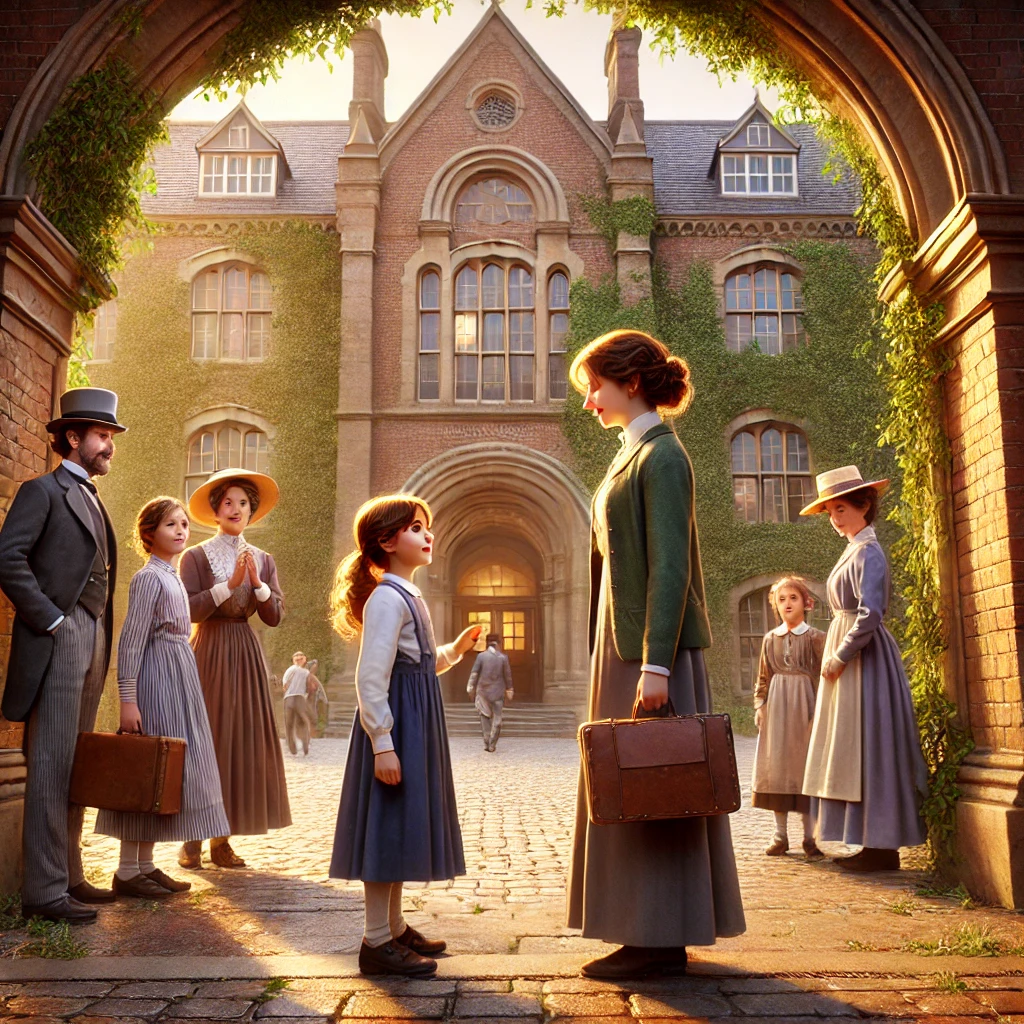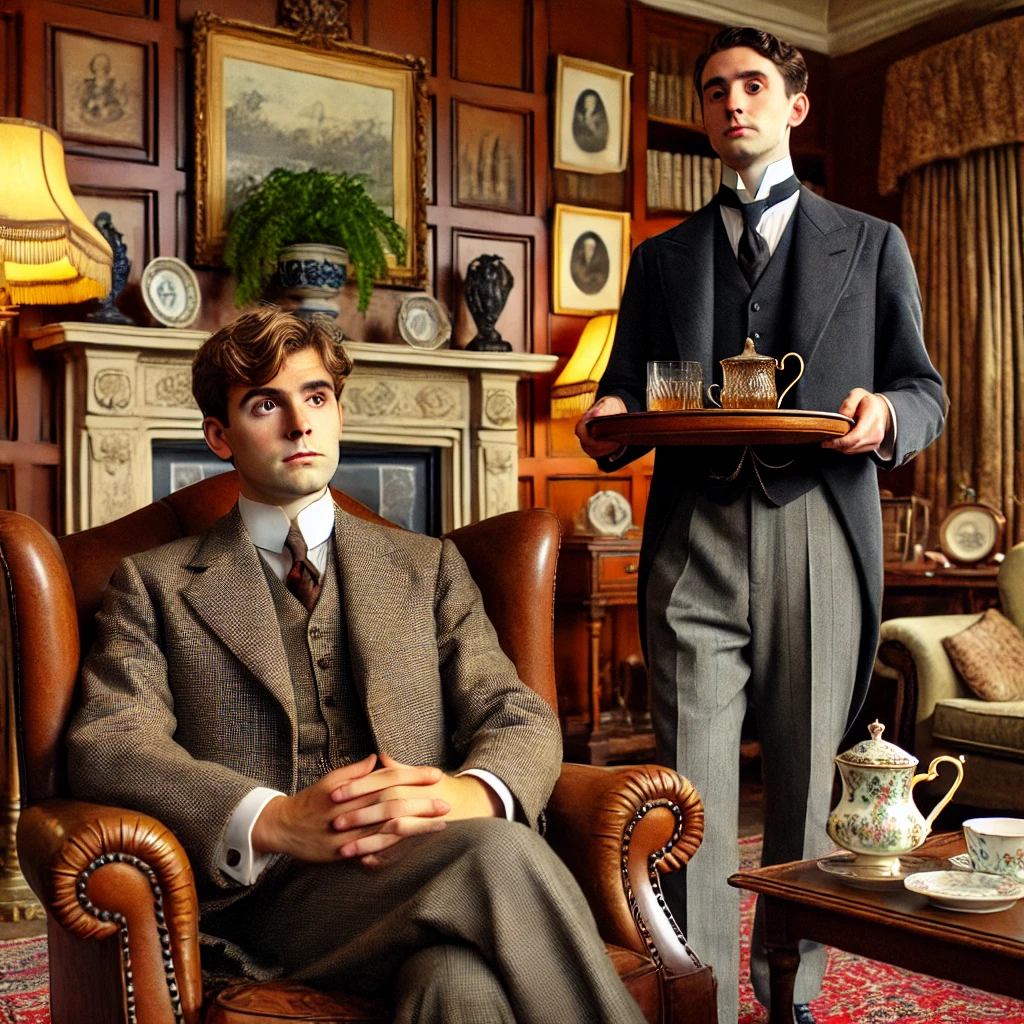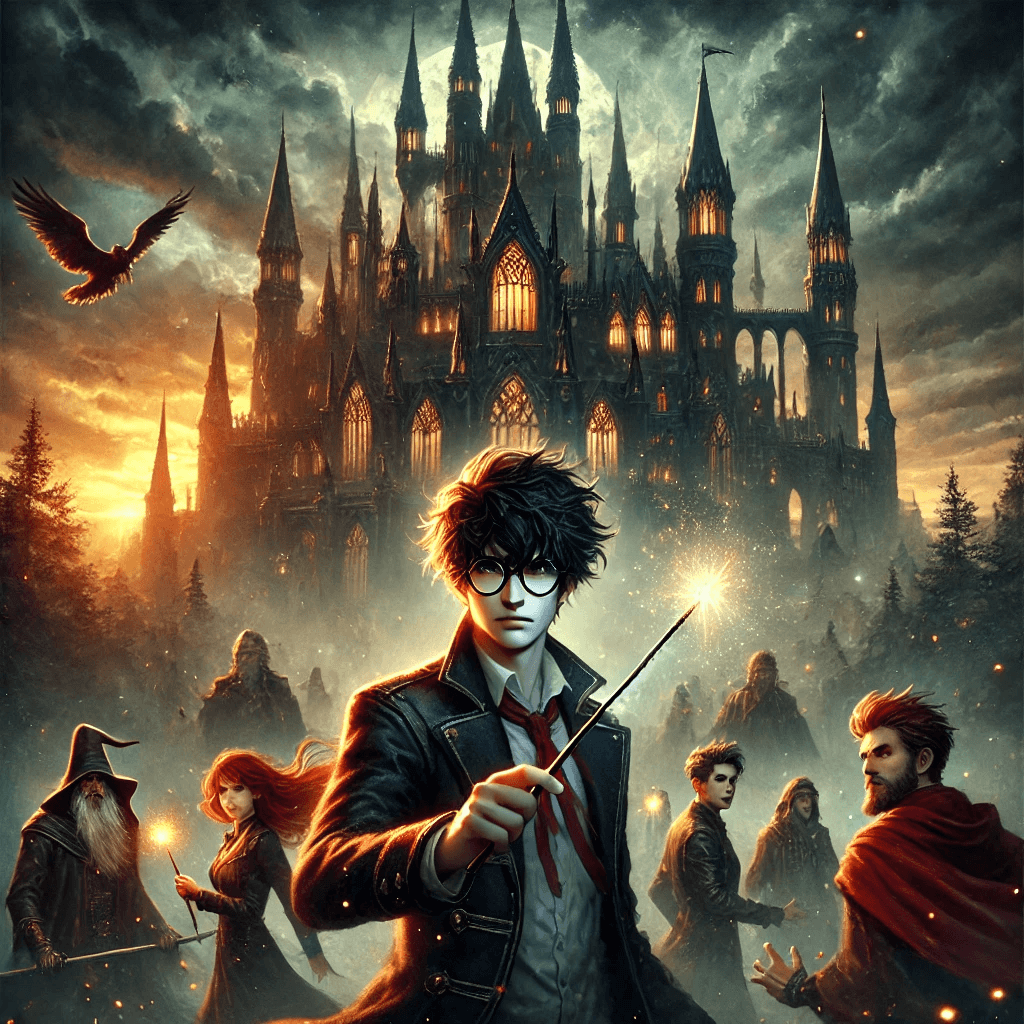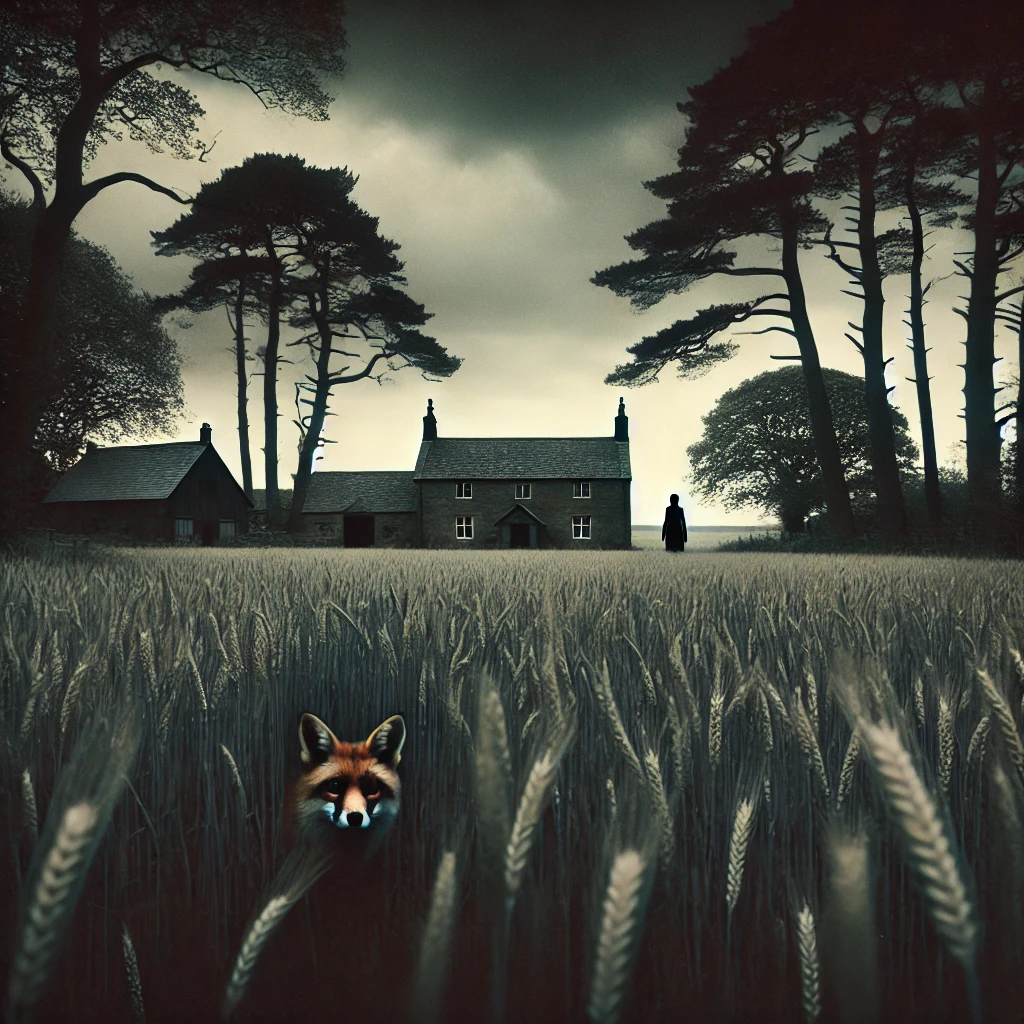Published in 1951, The Catcher in the Rye by J.D. Salinger is a seminal work of American literature that captures the angst, alienation, and rebellious spirit of adolescence. Narrated by the irreverent and deeply introspective 16-year-old Holden Caulfield, the novel takes readers on a journey through his experiences in New York City after being expelled from a prestigious boarding school.
Plot Summary
On a bitter December afternoon, Holden Caulfield stood atop a windswept hill at Pencey Prep, a prestigious boarding school in Pennsylvania. From there, he watched his peers cheer on the school’s football team, their voices echoing faintly in the distance. Yet Holden felt detached, harboring no interest in the game or the school itself. His academic failures and lack of interest had sealed his fate—he was being expelled, yet again, from another institution. As the cold settled into his bones, he resolved to visit his elderly history teacher, Mr. Spencer, before departing.
Mr. Spencer greeted Holden warmly but soon began a well-meaning lecture about the importance of responsibility and playing life by its rules. Holden listened half-heartedly, his mind drifting, the old man’s pitying gaze making him restless. Despite his casual demeanor, Holden was increasingly frustrated by the expectations imposed on him by adults who, he believed, neither understood nor cared to understand him.
Back in his dormitory, Holden’s encounters with his abrasive neighbor Ackley and his conceited roommate Stradlater heightened his irritation. Stradlater, preparing for a date with a girl Holden knew well, asked him to write an English composition on his behalf. Holden agreed but wrote about his late brother Allie’s baseball glove instead. Allie’s death from leukemia had left an indelible mark on Holden, who cherished his brother’s creativity and innocence. When Stradlater dismissed the essay, tensions flared. Holden, convinced Stradlater had disrespected the girl he cared for, erupted in a futile attempt to fight him. The scuffle left Holden bruised and seething.
That night, unable to bear another moment at Pencey, Holden packed his belongings and slipped away, bound for New York City. He decided to delay returning home to face his parents’ disappointment. In the city, amidst the cacophony of lights and noise, he checked into an inexpensive hotel. There, he observed the sordid behaviors of its occupants, their shamelessness feeding his disdain for the adult world.
Lonely and yearning for connection, Holden ventured to a nightclub where he encountered three women tourists, their superficiality further deepening his disillusionment. Later, he agreed to a bellboy’s proposition to send a prostitute to his room. But when the young woman arrived, Holden, overwhelmed by feelings of inadequacy and sadness, found himself unable to proceed. Her indifferent departure and the bellboy’s subsequent extortion only compounded his growing despair.
The following day, Holden arranged to meet Sally Hayes, a former girlfriend, for a matinee. Before their rendezvous, he visited the Museum of Natural History, where the timeless exhibits offered him a fleeting sense of solace. The museum represented the stability and predictability he craved, untouched by the chaos of change.
At their meeting, Sally was radiant and eager, but Holden’s erratic behavior strained their interaction. Overwhelmed by his frustration with the world, he proposed an impulsive plan to escape society and live in isolation with her. Sally, appalled, rejected the idea, and their outing ended in bitter argument. Left alone, Holden contacted an old friend, Carl Luce, hoping for camaraderie. Yet their conversation proved shallow, with Carl uninterested in Holden’s deep questions about life and relationships.
As night fell, the cold city seemed to mirror Holden’s inner turmoil. Drunk and aimless, he wandered to Central Park, consumed by thoughts of his late brother and haunted by a recurring image of himself as a “catcher in the rye,” standing guard to protect children from losing their innocence. His anguish reached a fever pitch, and he began contemplating his own mortality.
Finally, yearning for comfort, Holden made his way to his family’s apartment to see his younger sister, Phoebe. Her warmth and wisdom were a balm to his battered spirit. She listened intently as he spoke of his failures and dreams, but when she realized he had been expelled again, her disappointment cut deep. Determined to shield her from his struggles, Holden promised to leave home for good, sparking her insistence that she join him. Her earnest loyalty moved him, but he refused, understanding the impossibility of his escape.
Desperate for refuge, Holden sought out Mr. Antolini, a former teacher who had once shown him kindness. Antolini welcomed him into his home, offering sage advice about the trajectory of Holden’s life. Yet during the night, Holden awoke to find Antolini patting his head in what he perceived as an inappropriate gesture. Confused and alarmed, Holden fled into the night.
Exhausted and ill, Holden wandered the city streets, his grip on reality loosening. He found himself at the carousel in Central Park, watching Phoebe ride the painted horses. Her laughter and innocence illuminated the grayness of his thoughts. He resolved to let her live her childhood without interference, realizing that life’s inevitable changes could not be stopped. As he watched her, a rare moment of peace washed over him.
Later, Holden revealed that he was narrating these events from a rest home, where he had been recovering. He expressed ambivalence about sharing his story, unsure of its value to others, yet his longing for connection was palpable. Though his future remained uncertain, Holden clung to the hope that he might find a way to navigate a world that felt at once alien and unrelenting.
Main Characters
Holden Caulfield: The protagonist and narrator, Holden is a sharp-witted, cynical teenager grappling with the death of his brother, the hypocrisy of the adult world, and his own mental health. His protective love for children and disdain for “phonies” shape much of his worldview.
Phoebe Caulfield: Holden’s younger sister and one of the few people he genuinely loves and trusts. Phoebe is intelligent, perceptive, and serves as a grounding presence in Holden’s turbulent life.
Mr. Antolini: Holden’s former English teacher, who offers advice and shelter during a pivotal moment. His ambiguous actions add to Holden’s confusion and distrust.
Allie Caulfield: Holden’s deceased younger brother, whose death profoundly affects Holden. Allie represents innocence and purity, ideals that Holden clings to.
Stradlater: Holden’s handsome, self-absorbed roommate at Pencey Prep, whose cavalier attitude toward women and life fuels Holden’s resentment.
Jane Gallagher: A girl Holden deeply admires and cares for, representing a part of his past when life felt simpler and more genuine.
Ackley: An awkward, unhygienic student at Pencey Prep who irritates Holden but also underscores his need for connection and compassion.
Theme
Alienation and Isolation: Holden’s estrangement from society highlights his struggle to find meaning and belonging in a world he views as hypocritical and superficial.
Loss of Innocence: Holden’s idealized view of childhood and his desire to protect innocence, symbolized by his fantasy of being “the catcher in the rye,” are central to his character.
Phoniness: A recurring motif in Holden’s narration, “phoniness” encapsulates his disdain for the insincerity and artificiality he perceives in adults and institutions.
Mental Health and Trauma: The novel subtly addresses mental health issues, as Holden frequently exhibits signs of depression, anxiety, and unresolved grief over Allie’s death.
Symbolism of the Red Hunting Hat: The hat represents Holden’s individuality and desire for protection, serving as both a shield against the world and a declaration of his unique identity.
Ducks in Central Park: Holden’s recurring question about where the ducks go in the winter reflects his search for stability and answers in a world of constant change.
Writing Style and Tone
J.D. Salinger’s prose is characterized by its conversational, first-person narrative style. The book’s voice, infused with teenage slang and colloquial expressions, captures Holden’s distinctive personality and perspective. His digressions, tangents, and candid asides make the narrative feel authentic and immersive.
Salinger uses understatement, irony, and sharp wit to juxtapose Holden’s external cynicism with his internal vulnerability. The tone alternates between humor, melancholy, and existential introspection, creating a compelling portrait of adolescence. The rawness of Holden’s voice amplifies the themes of alienation and confusion, making the novel resonate deeply with readers navigating similar transitions in life.
We hope this summary has sparked your interest and would appreciate you following Celsius 233 on social media:
There’s a treasure trove of other fascinating book summaries waiting for you. Check out our collection of stories that inspire, thrill, and provoke thought, just like this one by checking out the Book Shelf or the Library
Remember, while our summaries capture the essence, they can never replace the full experience of reading the book. If this summary intrigued you, consider diving into the complete story – buy the book and immerse yourself in the author’s original work.
If you want to request a book summary, click here.
When Saurabh is not working/watching football/reading books/traveling, you can reach him via Twitter/X, LinkedIn, or Threads
Restart reading!








